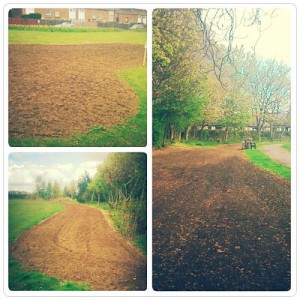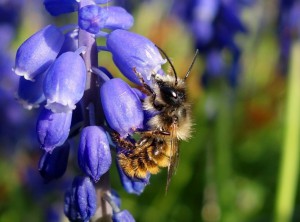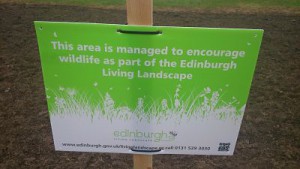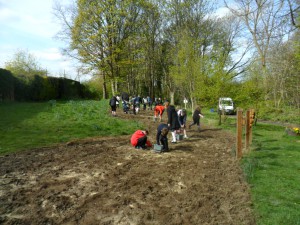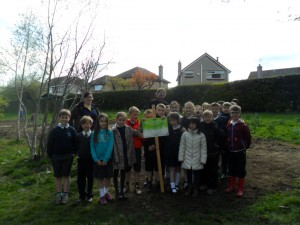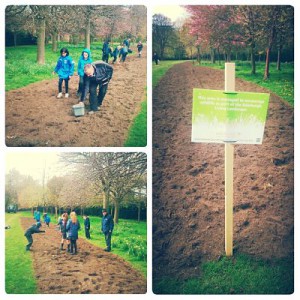
The end of April into the beginning of May has been all about meadows here in Edinburgh! This is a key part of Edinburgh Council’s focus within the Edinburgh Living Landscape, and 60 floral meadows have now been sown across the city.
What is a meadow?
Traditionally, a meadow is a grass field which is grown for hay and therefore is full of tall grasses punctuated by splashes of colour from wildflowers such as thistles, buttercups, daisies and orchids. We have termed our meadows ‘floral meadows’ to reflect the fact that whilst they are meadows, we have chosen a flower-rich seed mix. Some of our meadows have been sown using an Edinburgh seed mix, which was created as a result of the Urban Pollinators research project at the University of Edinburgh, and is therefore ideally suited to Edinburgh’s soil and climate.
What are the benefits of meadows?
Meadows are areas which are not intensively managed – they are just left to grow which can create a huge diversity of species and colour! This means two things: the council can leave them be, thus potentially realising a financial saving; and these areas can begin to develop more complex ecosystems which are crucial for supporting a variety of urban wildlife. They are therefore a win for the cash strapped council and a win for the species strapped parkland.
Meadows are unimproved areas; therefore they will have a low fertiliser input. Wild flowers thrive on low soil nutrient levels and so once we’ve sown them, we don’t need to do anything more to them – this also means there will be greater diversity of species, as one or more species (such as vigorous grasses) may begin to dominate with the application of fertiliser. The meadows will, however, be a uniform habitat overall with a large diversity of plant and animal species.
Having a meadow in a green area is not just beneficial for wildlife, but for the people who live near them. We have purposefully selected seed which has a high variety of beautiful and colourful flowers, so hopefully local people will enjoy looking at the meadows and spending time around them, which can help with increased mental wellbeing.
So why are meadows important?
Meadows contain an amazing diversity of plant and animal species and they will be cut once, in the autumn. This will allow invertebrates such as butterflies time to feed on the meadows and to complete the stages of their life cycle. The diversity of plant species will also provide food and foraging habitat for innumerable invertebrates (particularly pollinator species), birds and even small mammals. By creating meadows all across the city, we are beginning to break up the green desert of traditional parks and are patching together a network of species rich areas within the wider habitat mosaic in the city which will create a richness of biodiversity which might not otherwise be present.
How have we involved the community in this?
I have been crazily dashing around the city to many of these meadow sites, and arranging for school kids to come and help us create the meadows. We learnt all about biodiversity, habitats and why meadows are important then set to work sowing the seed together. Hopefully we will return with the kids in a few months to see the difference the meadow has made!
Why not create your own mini wild area? Meadows can be sown anywhere, from your back garden to raised beds, or even a pot on a window sill. There are lots of resources out there to support you in your seed sowing, check out Plantlife for more information.
